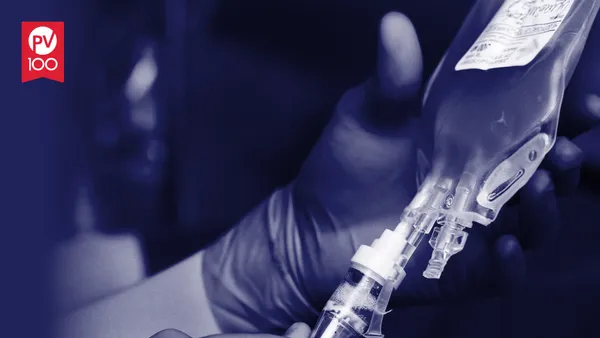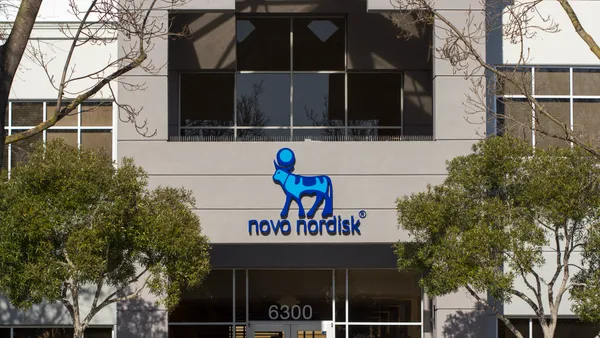George Coleman
President, Biomedex Inc., Spokane, Wash.; Biomedex specializes in a broad spectrum of contract manufacturing services for bio- pharmaceutical clients, from regulatory compliance to aseptic filling, to validation, to cleanroom sanitizing agents, to quality assurance, to component cleaning
David Fox
Partner, food, drug, medical device and agricultural group, Hogan & Hartson LLP, Washington, D.C.; Hogan & Hartson has more than 900 attorneys serving clients across all legal disciplines
Aaron Heifetz, Ph.D. VP
General manager, Cambrex Bio Science Inc., Baltimore; Cambrex Bio Science is a leading FDA and EMEA inspected, cGMP compliant, bulk biopharmaceuticals contract manufacturer that provides complete services from strain and process development through Phase III clinical and commercial production Ted Miller. Associate, Venture Investment Management Company LLC, Boston; VIMAC focuses on making new companies successful, by combining venture capital funding with hands-on, senior-level operational experience to help portfolio companies achieve success on a large scale Peter Rizik. President and CEO, ASM Resources Inc., Washington, D.C.; ASM Resources is the for-profit venture arm of the American Society for Microbiology, that focuses on the early-stage biotechnology market Wesley Russ. Director of sales and marketing, ASM?Resources Inc., Washington, D.C.; ASM Resources is the for-profit venture arm of the American Society for Microbiology, that focuses on the early-stage biotechnology market Victor Sarantschin. Director of technical marketing and business development, Neose Technologies Inc., Horsham, Pa.; Neose is a developer of proprietary technologies for the synthesis and manufacture of complex carbohydrates, enabling the rapid and cost-efficient enzymatic synthesis of a wide range of complex carbohydrates in commercial quantities David L. Webster, Ph.D. President, The Webster Consulting Group, Bethlehem, Pa.; The Webster Consulting Group provides management consulting services to the pharmaceutical, biotechnology, and medical industries
Experts on this topic is about to experience one of the richest growth phases in its lifecycle. With information generated by genomics, proteomics, high-throughput screening, and combinatorial chemistry, more new drug targets and biologic therapies will be available for research. By the end of the decade, biotechnology products could command about half of the $300 billion pharmaceutical industry, according to researchers at Kalorama Information, a division of MarketResearch.com Inc. This tremendous growth is likely to put pressure on an area often overlooked — manufacturing. New product approvals and increasing demand for existing marketed products had biologics manufacturing facilities operating at or near full capacity at the end of 2001, according to researchers at U.S. Bancorp Piper Jaffray. In the near-term, experts predict that there is a real possibility of a shortfall in manufacturing capacity to meet the demand of products currently in the pipeline. In a report released in January 2002, Piper Jaffray estimates that there are 99 protein-based therapies in Phase II and Phase III clinical trials, which analysts predict will result in at least 34 new biologics in the next several years. The Pharmaceutical Research and Manufacturers Association (PhRMA) estimates that member companies have 369 biotechnology medicines in all stages of development that target more than 200 diseases. A lack of capacity in manufacturing can cost pharmaceutical and biotech companies in lost sales from products that don’t reach the consumer. According to Piper Jaffray, companies that fail to secure commercial manufacturing capacity can expect a loss of $100 million in annual sales from delayed launches. Similarly, a limited supply could translate into a loss of about $1 billion in market value. Manufacturing issues also can result in development and approval delays because processes may need to be reworked — and then be approved by regulatory authorities — before commercial scale up. In some cases, the Food and Drug Administration may ask for additional studies to prove that a manufacturing change has not changed safety or efficacy. Consider Immunex Corp.’s experience with Enbrel (etanercept), a treatment for rheumatoid and psoriatic arthritis. Enbrel, with sales of $761.9 million last year, is the flagship product for the biotechnology company, which has since been acquired by Amgen. “Enbrel is the poster child for the problem in biologics right now," says Ted Miller, an associate with Venture Investment Management Co. LLC’s biotech fund. “Immunex would have had a drug that topped out at well over $1 billion, but Immunex couldn’t make enough of it." Researchers with McKinsey & Co. say Immunex’s capacity shortage cost the company more than $200 million last year in lost revenue. Immunex has been plagued by supply problems since the product was launched in 1998. Demand for the arthritis drug has been greater than the company predicted. In early 2001, a limited supply of the product forced the company to begin a special program to manage access to Enbrel. Kalorama researchers say based on current and projected sales, Immunex would have needed to begin building a manufacturing plant in 1996, two years before Enbrel received FDA approval. But given the possibility of a Phase III failure, this investment would not have been wise. “When Immunex needed capacity, it didn’t have it," says David L. Webster, Ph.D., president of The Webster Consulting Group Inc. “The fundamental challenge in biologics is how to respond to demand. Accurate and timely forecasting is an extremely strategic competency of a biological company." “Will companies over build?" asks Aaron Heifetz, Ph.D., VP and general manager of Cambrex Bio Science Inc., a contract manufacturer. “I don’t think so. Every year, there are more and more biologics coming to market." THE CHALLENGES Immunex, however, has not been — and will not be — the only company to have problems with manufacturing. Other companies, including Eli Lilly & Co. and Genentech Inc., have met with regulatory delays because of manufacturing concerns. For example, the launch of psoriasis drug Xanelim, a Genentech and Xoma Ltd. product, was pushed back recently when the FDA required additional pharmacokinetics testing. This study was required because minor manufacturing modifications were made during Phase III trials to allow for large-scale production. In April 2002, the companies announced that a pharmacokinetic study conducted on Xanelim comparing Xoma-produced material and Genentech-produced material did not achieve the pre-defined statistical definition for comparability. Genentech and Xoma are working closely with the FDA to determine the next steps, but this will probably delay the filing of a Biologics Licensing Application (BLA) for Xanelim beyond what was originally planned for the summer of this year. In July 2002, Lilly announced that several new product approvals could be delayed as the company negotiates with the FDA to make necessary changes to its Indianapolis facilities. The products that could be delayed include an intramuscular version of Zyprexa, an antidepressant, and Cymbalta, which is currently under review by the FDA for the treatment of depression. The FDA recently conducted a comprehensive review of eight of the company’s global manufacturing sites. Regulators noted 50 “observations" about deviations from current good manufacturing practice (cGMP) for these facilities. One of the biggest challenges, according to Wesley Russ, director of sales and marketing, ASM?Resources, is being able to produce enough material to conduct clinical trials and making a case that the product can be manufactured economically. With a growing number of protein therapeutics in development, this translates to a growing demand for pilot and manufacturing bioprocessing capacity. “After a company’s research effort has identified a new protein of therapeutic value, initial capacity is generally easy," he says. “The roadblock in the development process is expressing and purifying enough of the material to conduct clinical trials and demonstrate commercial viability. Before entering clinical trials, it must be demonstrated that the bioprocessing component of the project is far enough along that it will be commercially economical to manufacture the material. Demonstrating manufacturing ability is complicated by the shortage of pilot and manufacturing facilities with appropriate equipment and regulatory approval. Additionally, this is a field that still is being defined by the FDA." Mr. Miller agrees. “As more targets come online and more companies go after these targets, there will be more and more of a crunch to be able to make sufficient amounts of cGMP quality proteins. This crunch will occur at all levels, including the R&D process." Judging overall industry capacity, however, is difficult to generalize, Dr. Webster notes. “Manufacturing in biologicals is like the stock market: timing is everything. And capacity is not easily transferred from one product to another. Some products actually have excess capacity, while others could use much more capacity. Making the broad generalization that there is not enough capacity misses a piece of the story." Biologics manufacturing is complex. Many products are developed from sources such as mammalian-derived cells or bacterial hosts in a process that is much more expensive and time-consuming than traditional small-molecule products. The biologics manufacturing process requires extensive quality checks at several different steps. Cells containing the appropriate protein expression are grown in fermentation tanks. Appropriate media are added to the reactors, and oxygen content is maintained to grow the cells to an optimal concentration. Later in the process, the cells are separated from the media and the proteins are purified. Quality control testing is done throughout this process. “Protein expression efficiency is probably one of the biggest bottlenecks," says Victor Sarantschin, director of technical marketing and business development at Neose Technologies Inc., a developer of proprietary technologies for the synthesis and manufacture of complex carbohydrates. “Standard Chinese Hamster Ovary cell-expression systems (CHO-cells) have been the industry standard to produce therapeutic glycoproteins — monoclonal antibodies, interferons, blood clotting factors, etc. — that have a sugar attached to the protein. The limiting factor is glycosylation, the post-translational modification. This is a very complex and slow process. When the protein is being pushed to make more and more protein, the cell can’t keep up with putting the sugars onto the protein. So the cell engineer or the biotech company has to dial-down expression. “Another bottleneck is developing robust, industrial-scale purification processes that can purify proteins efficiently and quickly," Mr. Sarantschin says. “There are limiting steps on the upstream side of not being able to keep up with glycosylation, and limiting steps on the downstream of not having chromatography processes or purification processes that are fast enough to handle capacity." The manufacture of monoclonal antibodies is possibly more complex. The cells are generally taken from animal tissue and fused with immortal cell lines to generate a cell line capable of producing high levels of the desired antibody. This step, however, is not always easy, and delays can occur if there are problems in developing the cell line. Additionally, the most popular method of purifying antibodies involves a costly reagent when used on a large scale. “The capacity for the cell to produce high amounts of protein is a huge bottleneck," Mr. Sarantschin says. “This is driving the development of alternative expression systems, such as transgenic animals and transgenic plants." In some cases, manufacturing processes must be altered during scale up for commercial quantities. This can result in delays because even minor changes need regulatory approval. In addition, manufacturing protocols have to be individually tailored for production of individual proteins. “We are just now starting to see products resulting from the advances with the genome, proteomics, and drug discovery," Mr. Russ says. “Another critical issue associated with bioprocessing is regulatory. Unlike a chemical pharmaceutical compound, where there’s a track record of being able to make a profit in certain classes, with proteins there isn’t that track record. Companies involved in developing this new class of therapeutic proteins are working collectively to establish process standards and develop the regulatory guidelines with the FDA." The biologics manufacturing picture is complicated further by the fact that these candidates are for delivery by injection or intravenous methods. According to Kalorama, more than 3,000 candidates are in the pipeline in which parenteral — intravenous or injection — delivery is the most prevalent. The majority of these products are in the early stages of development, indicating a huge future demand for manufacturing of injection and intravenous products. About 300 such products are expected to be approved in the next 10 years. Although biologics are typically much more difficult and expensive to manufacture — and generally not available for administration by tablet — they are much more promising to treat diseases that have not been addressed by small-molecule drugs. And since these products target cells in a specific manner, they minimize side effects. The therapeutic protein segment of the pharmaceutical industry is predicted to have annual growth of 15% because of strong pipelines of protein-based drugs, according to Kalorama. Many of these products — in areas such as oncology, immunology, cardiovascular, and infectious diseases — are being discovered and developed primarily by biotechnology companies. Piper Jaffray researchers say new products will require 940,000 liters of mammalian cell culture-based manufacturing capacity in 2005 and 2006. Current capacity for biologics and protein manufacturing today is about 413,000 liters. The good news is that additional capacity is expected to be added, especially with new investments from the biotechnology sector. Piper Jaffray researchers say there could be excess capacity, if, as manufacturers expect, production efficiencies occur. This takes into account an estimated 15% annual sales growth for large-molecule therapeutics currently on the market, as well as the 40 new large molecule therapeutics that are expected to reach the market in the next few years. The bad news: It may take five years to build the manufacturing plants to meet this increased demand, leading some pharmaceutical and biotechnology companies to struggle to match supply with industry demand for their products in the short term. The bulk of the manufacturing capacity is likely to be held by a handful of companies. Production gaps are likely to occur in the area of monoclonal antibodies. There are about 270 monoclonal antibodies in development. This could yield 50 to 60 product approvals in the next six to seven years. As a result, Kalorama researchers predict the industry will need a six-fold increase in cell-culture capacity. Contracting success Will contract manufacturers be able to meet the demand for increased capacity? No, says, George Coleman, president of Biomedex Inc., a contract manufacturer that specializes in manufacturing clinical trial materials, preclinical through Phase II. “It takes so long to build capacity and there is a dramatic shortage now," he says. “It is not likely that enough capacity is going to come on line in time." This, he says, “will leave biotech companies scrambling. It’s going to leave them short of capacity to produce products. A number of outsourcing companies are taking reservation fees to hold production time. This is a pretty strong indication of the seriousness of the capacity crunch." Piper Jaffray researchers predict that biotechnology companies are expected to form partnerships and alliances — as well as merge — with other biotechnology and pharmaceutical companies that have manufacturing capacity. They say most of the new capacity is likely to come not from contractors but from pharmaceutical and biotechnology companies. But other industry experts disagree. Dr. Webster says contract manufacturers will play a larger role in the manufacturing process, even taking on more of the risk. Incentive contracts with rewards for meeting quality requirements and time-related milestones will become more common. “In the old days, if manufacturers didn’t meet their commitments, it was no big deal," he says. “Now, the stakes are increasing. Companies would like manufacturing partners to share that risk. “The demand on the biotech side will drive contract manufacturers to provide a much higher level of quality," Dr. Webster says. “Manufacturers were often viewed as the last part of the process. Increasingly, though, partnerships will be developed with manufacturers very early on to smooth out some of the bumps that could happen during scale up." Dr. Webster continues: “It’s very costly for a biotech company to build capacity and get manufacturing up and running quickly. It is to their strategic advantage to find partners who can scale up and who have experience in manufacturing. Biotechnology companies realize that their survival depends on having effective and high-quality manufacturing." The contract manufacturing industry is well-positioned, Dr. Heifetz says. However, he says, a glaring shortfall is in blockbuster drugs. “Manufacturing capacity is divided into two market segments," he says. “One of the segments is measured by drug volume, that is the capacity for blockbuster drugs that require very large amounts of protein to dose a patient. Drugs such as Enbrel really put a constraint on capacity. Those bl ckbuster products require hundreds of thousands of liters of production capacity, most of them in cell cultures." Over the next few years, it is expected that efficiency improvements in manufacturing mammalian cell cultures will help to alleviate some of the capacity pressures. “There is a large push for mammalian cell monoclonal antibody products," Dr. Heifetz says. “Right now, all of those products are high-dose products, thus the cost to the manufacturer also is very high. These products require large capital investments, as much as $400 million for construction and sometimes multiple plants." Dr. Heifetz says the contract manufacturing industry has taken two approaches: to lower the cost of production per gram by shifting from mammalian systems, which are full antibodies, to single chain antibodies and microbials. “There is a second trend, as well," Dr. Heifetz says. “Many antibodies, especially the anticancer antibodies, are targeting molecules where, instead of trying to stimulate the immune response, they will be used as vehicles to deliver toxic drugs to particular sites within cells. Current studies reveal that drugs coupled to antibodies will increase the efficacy, possibly by an order of magnitude, which means they are going to decrease the dose required by an order of magnitude. Consequently, companies will only need one-tenth of the actual capacity to manufacture some of these big blockbusters that fit into that model." Building a new biologics manufacturing facility requires long lead times and fixed costs, say those with Piper Jaffray. It can take three to five years to build a new biologics manufacturing facility, starting from the initial steps of feasibility studies and site selection to engineering design, construction, start up, and operations. Estimated costs for a large-scale new biologics facility with a total bioreactor capacity of roughly 100,000 liters range from $200 million to $400 million. One square foot of capacity can produce about $1,000 of product annually. So 500,000 square feet of manufacturing space can be expected to produce only $500 million of product annually. If that space is dedicated to clinical trial materials, then 500,000 square feet of space can produce up to 500 Phase I/II products or about 100 Phase III products. the FDA Wrinkle The FDA always has been very serious about its manufacturing regulations — but now it backs that up with threats of product recalls, fines, and plant shutdowns if current good manufacturing practice (cGMP) is not followed exactly. cGMP defined as the minimum current good manufacturing practice for methods to be used in, and the facilities or controls to be used for, the manufacture, processing, packing, or holding of a drug to assure that such drug meets the requirements of the act as to safety, and has the identity and strength and meets the quality and purity characteristics that it purports or is represented to possess. The agency has altered the way it conducts inspections, particularly for drug manufacturers, says David Fox, partner with the law firm of Hogan & Hartson LLP, in the Washington firm’s food, drug, medical device, and agricultural practice group. “We’re seeing a significant increase in FDA enforcement in the GMP area. We’re seeing a lot more emphasis on extrapolating from specific systems to make a cGMP decision for the entire plant. This means that the FDA is becoming more focused during inspections and looking at particular systems within the factory, and related quality systems, instead of doing an overall audit of the entire plant." He says that budget constraints have hindered the agency’s ability to do full scale audits of every company every two years as mandated by the Food, Drug, & Cosmetic Act. This systems-based approach is a way for the agency to keep up with the demand for resources these audits place on regulators. F PharmaVoice welcomes comments about this article. E-mail us at [email protected]. enbrel is the poster child for the problem in biologics right now. Immunex would have had a drug that topped out at well over $1 billion, but Immunex couldn’t make enough of it. Current studies reveal that drugs coupled to antibodies will increase the efficacy, possibly by an order of magnitude, which means they are going to decrease the dose required by an order of magnitude. Consequently, companies will only need one-tenth of the actual capacity to manufacture some of these big blockbusters that fit into that model. And the survey says … 45.1% consider FDA and regulatory compliance issues a critically important factor 29% manufacturing standards 28% the costs involved with production scale-up 23% knowledge of emerging technologies Note: The results of the survey motivated ASMR to develop a resource and clearinghouse of industry best practices in the form of a report slated for release in December 2002. biopharmaceutical manufacturers identify maximizing production efficiency (46%), the most critical issue the sector faces, according to a study entitled “Advances in Large Scale BioManufacturing and Scale-up Production." “The call is going out for professionals in the field to maximize production efficiency, reduce production costs, and streamline the product development process," says Peter Rizik, president and CEO of ASM Resources Inc. (ASMR). “Top priorities for manufacturers include understanding emerging technologies, more proficiently benchmarking their work, defining best practices, and understanding the requirements for FDA compliance. An enhanced knowledge of state-of-the-art technology, production standards, and industry regulations can increase manufacturing efficiency and speed the approval process, resulting in millions of dollars of additional revenues." FDA and regulatory compliance issues were the second most often cited industry concern, with 45.1% considering them a critically important factor, according to the survey carried out by BioPlan Associates and sponsored by the ASMR. Understanding the standards required to obtain regulatory compliance, especially for new technologies, is not clear to most manufacturers. The complexity and time involved in the FDA compliance process are additional challenges that survey participants indicated were important. Experts said the underlying factors behind the industry’s confusion arise from broad-based regulations that apply to large industry sectors rather than to specific industry segments. The lack of segment-specific guidance may leave some sponsors of novel technology to navigate the compliance trail alone. Conversely, once a new technology moves beyond research and development and into acceptance and use, the FDA must develop a suitable understanding of the new technology. This is a major source of compliance delays say industry experts. Other factors important to the industry included manufacturing standards (29%), the costs involved with production scale-up (28%), and knowledge of emerging technologies (23%). The results of the survey motivated ASMR to develop a resource and clearinghouse of industry best practices in the form of a report slated for release in December 2002. Source: BioPlan Associates Inc., Washington, D.C. Identifying the critical issues … The demand for biologics manufacturing capabilities is expected to expand, due primarily to an increase in research of proteins, viruses, and blood components. In the short-term, though, some pharmaceutical, biotechnology, and contract manufacturers may face a manufacturing capacity shortage. Manufacturing for BIO Capacity After a company’s research effort has identified a new protein of therapeutic value initial capacity is generally easy. The roadblock in the development process is expressing and purifying enough of the material to conduct clinical trials and demonstrate commercial viability. It’s very costly for a biotech company to build capacity and get manufacturing up and running quickly. It is to their strategic advantage to find partners who can scale up and who have experience in manufacturing. Biotechnology companies realize that their survival depends on having effective and high-quality manufacturing. By Denise Myshko










